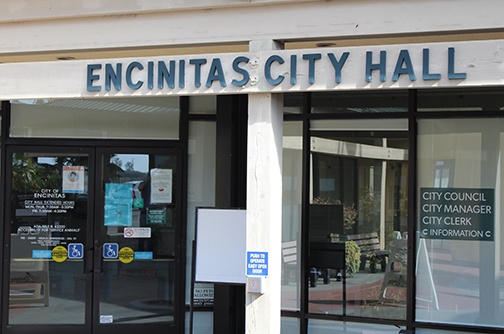ENCINITAS — A three-way legal action, pitting the city and state governments against a private citizens’ group, will determine the fate of Encinitas’ practice of zoning by referendum.
That practice, which residents instituted in 2013 as Proposition A, requires local voters to approve certain land uses and increases to allowable residential densities and building heights.
Some other cities, such as Escondido and Santee, use similar zoning-by-referendum mechanisms, while others reserve such decisions to their local legislatures.
In 2016 and 2018, Encinitas voters blocked a state-mandated affordable housing plan, known as a Housing Element, which would’ve increased certain density and building height allowances. The city failed to adopt its current Housing Element until 2019, seven years past the statutory deadline, only after a court compelled it to do so, overriding Proposition A on a one-time basis.
To avert a similar deadlock in adopting a new Housing Element update due in April, both the city government and the state’s Department of Housing and Community Development (HCD) want a judge to remand partial approval authority back to the city council.
State law supersedes Proposition A “to the limited extent necessary to allow the city to adopt Housing Elements,” the city attorney argues in a March court filing. The city seeks “a judicial declaration that a simple majority of the city council may adopt future Housing Elements and implementing actions … without a vote of the people.”
The city administration believed at that time HCD sought to invalidate Proposition A “in its entirety,” but HCD denies that assertion.
“[HCD] denies that an actual controversy has arisen between the city and the Department,” according to a September court filing. However, “an actual case or controversy has arisen between the city and [HCD], on the one hand, and Preserve Proposition A, on the other.”
Preserve Proposition A, a private organization, says zoning-by-referendum doesn’t inherently preclude adopting a Housing Element on time, and so opposes the city and state’s requested alterations.
Rather, the city government, in developing voter-blocked housing plans to date, has “failed to exhaust [its] administrative remedies,” the group contends in a July court filing.
Voters previously obstructed Housing Element adoption only because the city proposed, among other things, taller building allowances than HCD actually required, according to Planning Commissioner and Proposition A author Bruce Ehlers.
“I trust residents to pass a plan that delivers on the promise of affordable housing while adding only the minimum [density] required by law,” Susan Turney, a lead Proposition A campaigner who lost a recent bid for city council, said in September.
Turney believes increasing residential density allowances mostly benefits developers, who profit from extra market-rate units but produce relatively little affordable housing in return.
“It doesn’t seem fair that the only group defending Prop A, which was passed by a majority of the voters, is fighting two other parties that are both funded by our taxes,” Ehlers told The Coast News.
The city incurred some $84,000 in legal costs related to this case as of November, the administration said in a statement. By comparison, Turney estimates private donors contributed roughly $20,000 so far to defend Proposition A.
The court won’t hear the case again until June, after the Housing Element adoption deadline.
HCD declined to comment on pending litigation.




1 comment
Prop A isn’t zoning by referendum. Prop A lets the voters decide if they want taller buildings and/or increased density than is prohibited in the General Plan and the Municipal Code. If you build in Encinitas the code states that the tallest building allowed is no more than 30 feet tall for a commercial building and less height for a a residential building. There are many buildings in Encinitas that were built without problems in meeting the height limitations. Density is the number of houses (called dwelling units to include apartments/condos) per acre of land which is the zoning. Much of the zoning in Encinitas is R-5 and R-8 for 5 and 8 dwelling units per acre. Developers don’t like zoning, the state HCD doesn’t like zoning, and the current council, including Mayor Blakespear doesn’t like zoning and want to do away with any rights of the residents to determine what their city will look like with traffic and crowding. Have you noticed that the state HCD won’t comment on Prop A?
Comments are closed.